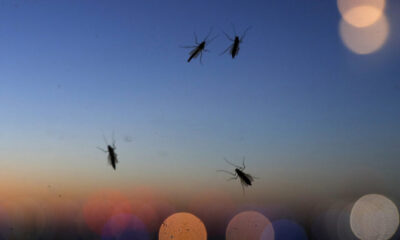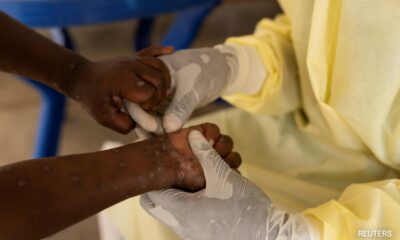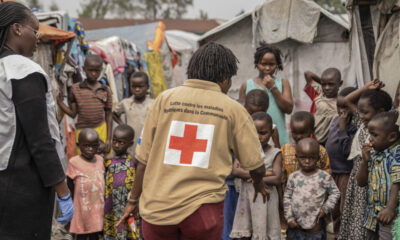Business
Mpox virus: things to know

Preventive measures against mpox have been shared by experts from the Philippine College of Physicians (PCP), urging the public to protect themselves amid the ongoing global public health emergency.
For starters, mpox is a viral disease caused by the monkeypox virus, which can cause similar symptoms to smallpox, according to the World Health Organization (WHO).
The incubation period for MPOX, or the time between exposure and the onset of symptoms, typically ranges from 5 to 13 days.
The first common symptoms include fever, fatigue, headache, muscle aches, back pain, low energy and swollen lymph nodes, according to PCP.
Then a rash appears shortly after the first symptoms persist.
“One of the most striking features of the rash is its distinctive, deep-set appearance with a dimple in the center, and it can be quite painful,” said infectious disease expert Rontgene M. Solante during his discussion at the PCP -healthforum. on mpox.
There are two types of mpox: Clade I, which is associated with more severe illness and deaths and has a higher mortality rate of 10%, according to the WHO.
Meanwhile, the five active MPox cases in the Philippines reported on Wednesday are all Clade II, the MPOX type associated with the global outbreak since 2022.
Clade II is considered less severe and has a survival rate of 99.99%.
In the current global outbreak, transmission of MPOX appears to occur primarily through close physical contact, including sexual contact, PCP said.
“The virus can enter through damaged skin and mucosal surfaces: oral, pharyngeal, ocular and genital, or through the respiratory tract,” Mr Solante said.
Mpox can also be transmitted by infected animals, but also from mother to child during pregnancy or at birth.
Transmission via respiratory droplets has also been reported, but usually involves small airborne particles, or aerosols, over short distances and prolonged close contact.
“There have been reports of exposure to respiratory secretions and fomites – contaminated inanimate objects such as towels and bedding – as routes or portals for the transmission of MPox,” said infectious disease expert Arthur Dessi E. Roman in his discussion.
The PCP recommended being aware of activities that could spread mpox, and practicing hand hygiene by washing hands with soap and water and disinfecting them with alcohol.
Experts also recommended avoiding contact with visible rashes on others and considering keeping skin-to-skin contact to a minimum.
This is especially important in high-risk areas, such as confined spaces (back rooms, saunas, massage parlors and sex clubs), where intimate contact is frequent.
It is also recommended to clean and disinfect objects and surfaces that are suspected of being contaminated with the mpox virus.
Steps to take if MPox is suspected
The Department of Health (DOH) has issued a public health advisory outlining necessary steps for individuals who suspect they may have contracted MPox.
Individuals who have had skin-to-skin contact and traveled outside the country in the past 30 days, while currently asymptomatic, are advised by the DoH to temporarily refrain from social gatherings and vigilantly monitor their health status.
Those who have had no skin-to-skin contact in the past 30 days and have no travel history but exhibit symptoms of mpox should consult a healthcare provider or dermatologist. They are also encouraged to contact the hotline on 1555 for additional support.
Finally, the health department recommends that individuals showing symptoms and who have had skin-to-skin contact in the past 30 days, along with recent international travel, should self-isolate. This precaution is necessary to prevent spreading the infection to others, and they are encouraged to contact testing centers to evaluate their health status. – Edg Adrian A. Eva













